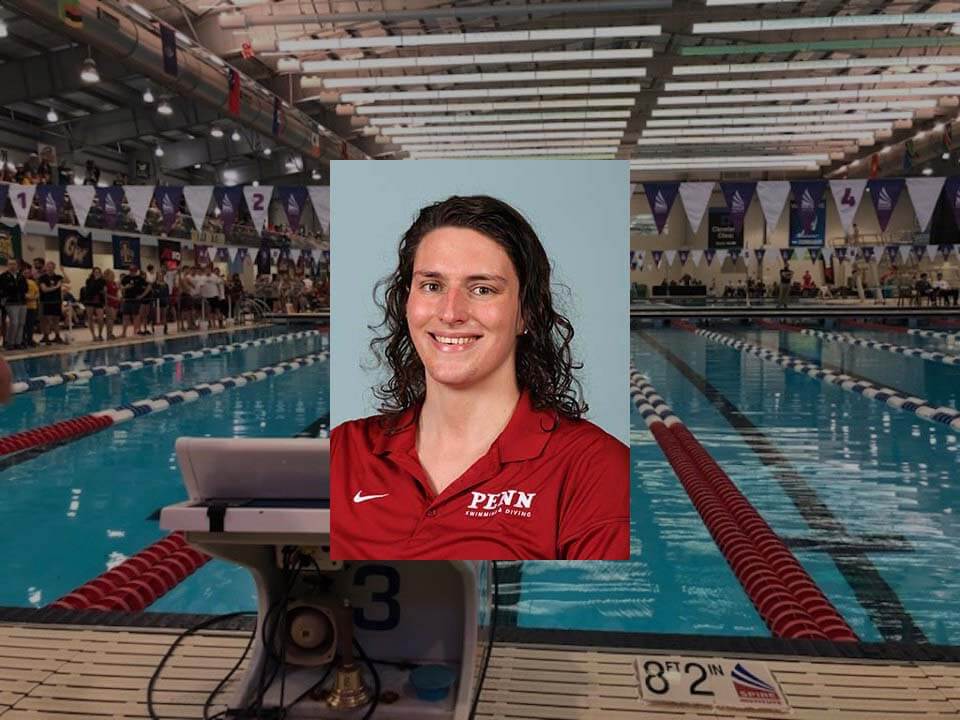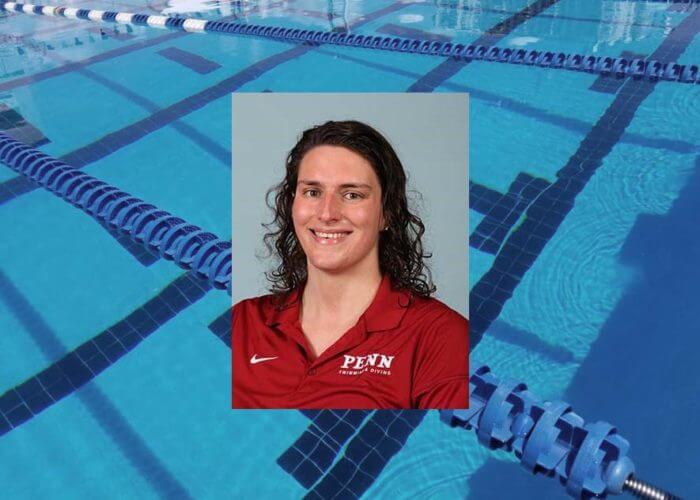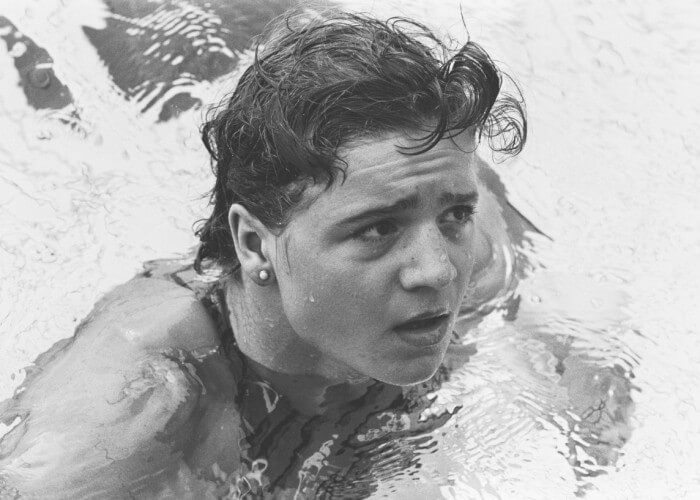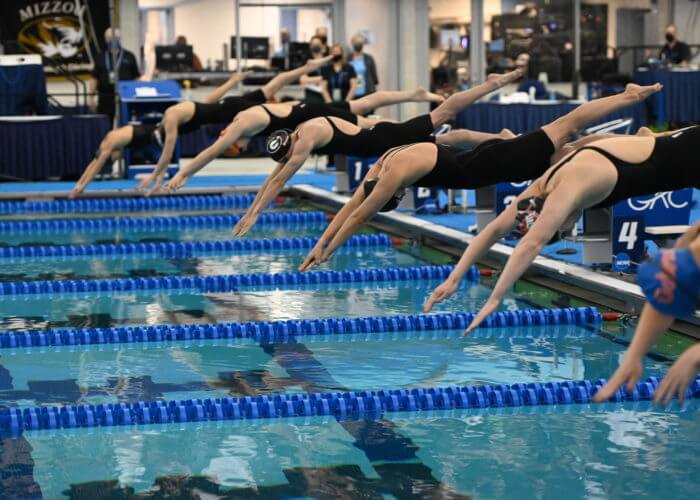The Protection of Women’s Sports (Now and Future) At the Heart Of Lia Thomas Situation

Protection of Women’s Sports At the Heart Of Lia Thomas Situation
The word bigot has been hurled. Been accused of transphobia. Said to be heartless. The list goes on, many of the insults or attacks inappropriate for print. It comes with the journalistic territory, especially when a controversial topic is tackled, and in this age of toughness when hiding behind an anonymous social-media account is typical.
There have also been plenty of supportive comments and emails, from individuals appreciative that a contentious topic has been addressed, and a stance has been taken on an issue that is having a serious impact on the sport.

Lia Thomas
Here’s the thing: The Lia Thomas controversy continues to stir debate, and Swimming World – and myself as Editor-in-Chief – has not shied away from continuing coverage. We have documented the storyline’s impact on the pool and the potential influence it will have on the greater sports world. We have focused on the uneven playing field faced by biological female athletes. And…AND…we have discussed solutions to ensure Thomas is offered some form of inclusivity.
Laziness, ignorance, or agenda-driven positioning – in some cases – have attempted to make the Lia Thomas situation about her identity as a transgender woman. Since coverage of her situation started in December, that has never been the case. It is terrific that Thomas has found her identity as a woman and as a swimmer, and wants to continue her swimming career. From the get-go, this issue has been about one thing – the protection of fairness for biological female athletes and women’s sports.
By now, the narrative of the Thomas saga is well-known. If a quick rehash is required, here we go. Thomas is a transgender woman who competed for three years as a member of the University of Pennsylvania men’s program. Following hormone-suppressant therapy, which is in line with current NCAA requirements, Thomas – this year – started to compete as a member of Penn’s women’s program.
In the early stages of the season, Thomas produced impressive times that suggest she may challenge the American records of Missy Franklin (200 freestyle) and Katie Ledecky (500 freestyle) at the NCAA Championships. The male-puberty advantage possessed by Thomas has clearly not been mitigated, even after she complied with the NCAA standard (since altered), and her presence in a women’s sport is utterly unfair to the biological females against whom she will race.
So, again, we emphasize that the issue at hand is not about transgenderism. It is about providing an opportunity for thousands of female athletes – in the present and the future – to know they will enter competition with an equal chance for success, not already facing a scenario in which they are overmatched, or in which an opponent’s arsenal is far more potent.

Petra Schneider. Photo Courtesy: Rob Bogaerts / Anefo
I wrote in an earlier column that Thomas’ presence in the water is akin to past women on the global stage (specifically Olympic Games and World Championships) racing against the doping-fueled athletes of East Germany and China. Whether supplied by a syringe or via male puberty, how potent is a testosterone boost? Consider: The world record of 4:36.29 produced by East German Petra Schneider in the 400-meter individual medley at the 1980 Olympic Games in Moscow (which the U.S. boycotted) would have been good for sixth place at this past summer’s Olympics in Tokyo.
Sixth place. Forty-one years later. And in a suit and pool severely deficient compared with today’s equipment and facilities.
No, Thomas is not doping. She is not doing anything illicit, which was not the case in the days of the East German systematic-doping program, or the operation that promoted China from an also-ran nation in the pool to a superpower at the 1994 World Championships. Rather, Thomas is benefiting from the EFFECTS of years of testosterone production, and two years of hormone-suppressant therapy hardly diminishes the edge gained from male puberty.
In an op-ed, Olympic champion and women’s sports advocate Nancy Hogshead-Makar discussed the problems with Thomas racing against biological women. On several occasions, Hogshead-Makar noted the fight of women – for years – to gain equal footing with male sports. Her arguments, in part, shed light on the constant, snap-decision approach of dismissing fairness issues within women’s sports with little thought.
The past and present are filled with instances where women’s sports are viewed as nothing more than steerage class. A high school football stadium needs new artificial turf? Ok, just postpone the resodding of the girls’ soccer field. What do you think of the new scoreboard in the boys’ gym? Don’t know. What do you think of the flip-cards tracking the score of the field hockey match? These are examples that hold truth for most female athletes.
Hell, at the bubbles for last year’s NCAA Basketball Tournaments, the inequality in treatment of men’s and women’s sports was on full display. Remember the fully loaded weight-training facility for the guys? It was top-notch. Remember what the women were given? Nothing more than a rack of dumbbells. It was pathetic, and only underscored the uphill battle faced by women and female athletics.
So, in the case of Thomas, why should the NCAA’s decision to grant her participation in a women’s sport be deemed acceptable? Her advantage boosted by years of testosterone production has not been mitigated. But instead of performing due diligence on the science, the NCAA – using old data – developed a one-year hormone-suppressant requirement for transgender women that fell well short of what is necessary for fairness. It then booted responsibility on the issue to USA Swimming. Basically, the governing body took a dismissive approach, similar to: “This should be ok. It’s only women’s sports.”

Photo Courtesy: NCAA Media
No, it’s not ok. It’s not ok for women. It’s not ok for women’s athletics. It’s not ok for my three daughters. It’s not ok for the women who will battle Thomas for the NCAA title in the 500-yard freestyle in March. It’s not ok for Thomas, who is also in a no-win situation.
As part of her role with the Women’s Sports Policy Working Group, Hogshead-Makar makes a key point: “The WSPWG believes that all transgender girls/women athletes should be welcome within girls/women’s sports but with separate scoring, offsets, or separate events for those who have not sufficiently mitigated their male sex-linked performance advantages.”
Lia Thomas deserves a solution, and while that may not be racing against biological women behind the strength of what her body once produced, an answer must be found. A time trial or exhibition swim? The addition of a new classification?
It is critical that transgender athletes find a welcoming environment in our sport, but that cannot happen without guaranteeing a level playing field for biological women. Until then, women’s sports must be protected, and there must be an understanding that the Lia Thomas situation is not about her identity. It is about fairness and equal opportunity. Plain and simple.



